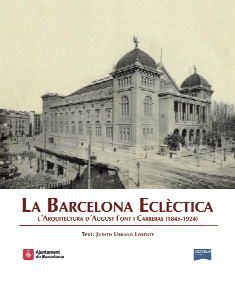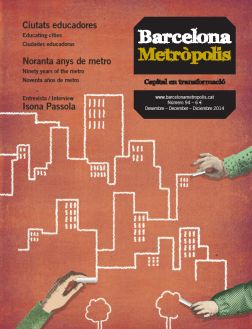 La Barcelona eclèctica.
La Barcelona eclèctica.
L’arquitectura d’August Font i Carreras (1845–1924)
[Eclectic Barcelona: the architecture of August Font i Carreras (1845–1924)]
Judith Urbano Lorente
Barcelona City Council and Dux Editorial
Barcelona, 2014
224 pages
Very few of Barcelona’s population know that high up in the city there is a small street dedicated to the architect August Font i Carreras (1845–1924); even fewer know who this man was, and of those who do, not many can identify his works. For this reason we consider the initiative by Dr Judith Urbano, a professor of Art History at the International University of Catalonia’s School of Architecture, to be a noble pursuit. For years she has enthusiastically endeavoured to shed light on Font’s legacy, as one of the most unknown – and perhaps also most undervalued – architects of 19th century Catalan architecture. In this vein, Dr Urbano’s latest offering is her book, recently published by the Barcelona City Council and Dux Editorial. It makes for a new and timely revindication of this grand professional, who was disregarded for his faithfulness to the dominant style of his day: eclecticism, the inherent ambiguity of which led to it being overshadowed by the irrepressible force of its successor, modernism.
The majority of architects who studied towards the end of the 19th century were given a very high quality education, where structural calculations, knowledge of materials, and technical and artistic drawing all played important parts, despite not being very forward-thinking aesthetically. This was a prominent trend across almost all of the European architectural schools of that era, where professors were fascinated with classical Greek, Arabic, Roman and above all Gothic architecture, and also by certain renaissance and baroque ideas. These students went on to use these references “eclectically” in their works. Many of them, including August Font and the similarly rediscovered Enric Sagnier, were aware that the times were changing and that architecture should move with them, but they chose to remain true to the historicist tradition – a decision that initially appeared well-made, as it brought them a number of commissions from institutions, the bourgeoisie and the church, who all trusted them with many of their buildings.
For this reason, La Barcelona eclèctica should prove to be of great interest to anyone who would like to discover our architecture and have a closer, objective and open look at August Font, a figure who Dr Urbano contextualises and analyses in the introduction and conclusion of this book. She meticulously presents to us his most relevant works in Barcelona (he also worked in Tarragona, Vilafranca del Penedès, Tortosa and Zaragoza), buildings that – as the reader will note – are not only emblematic, but also very well known, even though their author remains largely without recognition. The buildings I refer to are the Psychiatric Hospital of Les Corts, the façades of the church of Sants Just i Pastor and the Cathedral of Barcelona, the Les Arenes bullring in Plaça d’Espanya, the Les Heures Palace, the Little Sisters of the Poor Refuge, the branch of Caixa d’Estalvis and Mont de Pietat in Plaça de Sant Jaume, the Casa de la Caritat Almshouse, as well as the Palau de Belles Arts (Palace of the Fine Arts) of the 1888 Universal Exposition and the spectacular Maison Doré restaurant, both now disappeared.
As such, this is a publication that is well worth reading, allowing us to appreciate the talent and value of a tasteful and technically competent architect who, as Dr Urbano asserts, cannot be forgotten.



